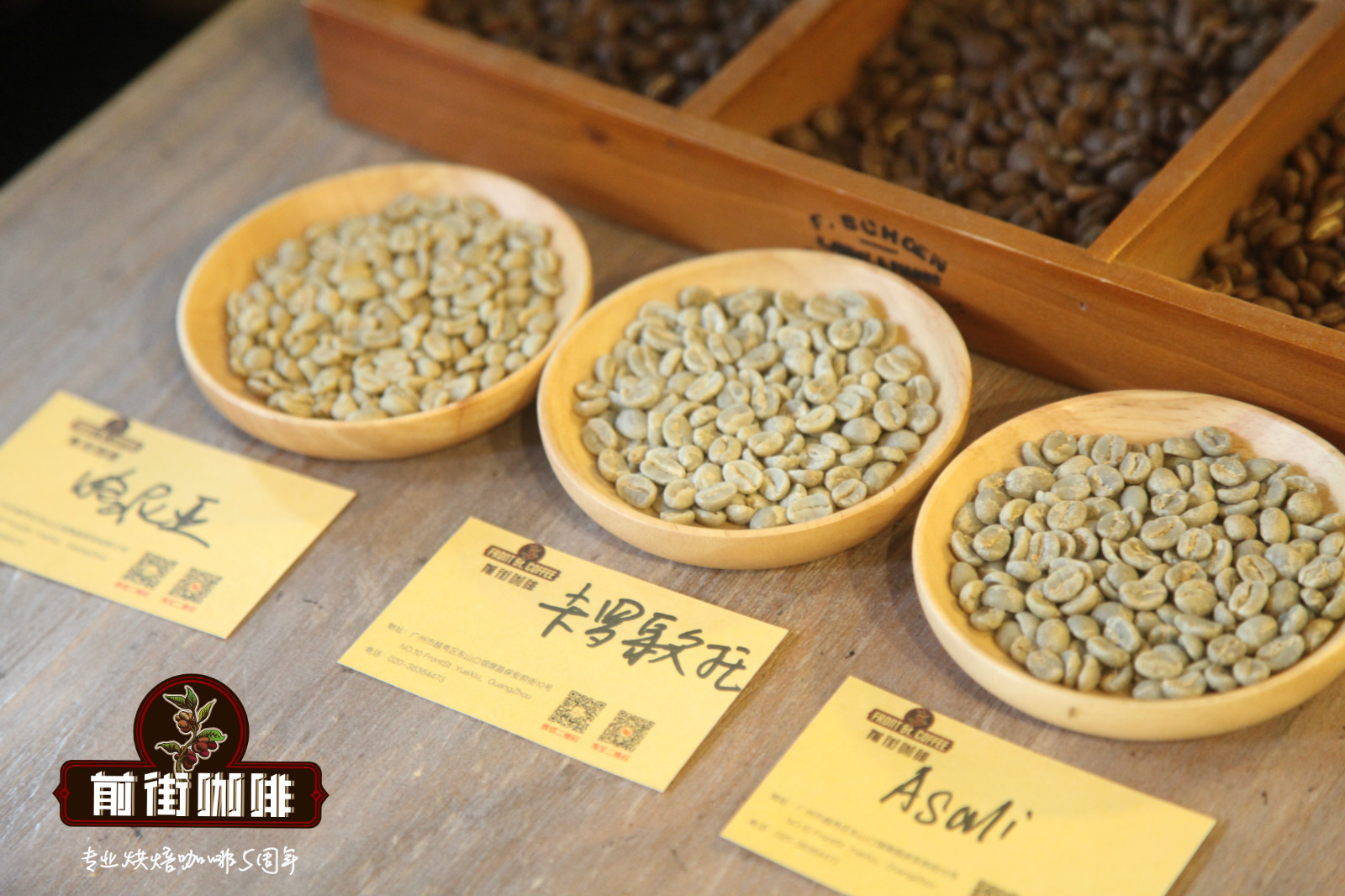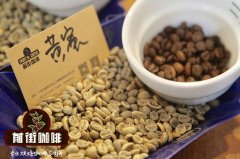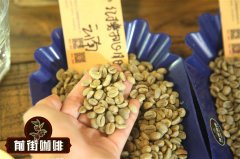Minas Carmo de Minas, Brazil | half-sun treatment of beans in Tijuco Preto Manor, Tuqiu

Professional coffee knowledge exchange more coffee bean information please follow the coffee workshop (Wechat official account cafe_style)
Minas Carmo de Minas, Brazil | what is the flavor of half-sun treatment of beans in Tijuco Preto Manor?
The potential is relatively flat without high-altitude mountain forests, most coffee is grown in low-altitude non-volcanic soil areas, and there is not too much shade for shading, resulting in the rapid growth of Brazilian beans, the shape of beans is very large, but the density of coffee is soft and the flavor does not change much. in addition, there is a great gap in various maturity of large-scale machine harvesting coffee beans. So that the quality of Brazilian beans is not particularly outstanding has always stayed in the category of commercial beans, but the unique development of semi-washing method to enhance the sweetness and mellow taste of Brazilian beans, almost Brazilian coffee is extremely warm and sweet.
After 2000, due to the inducement of coffee competition, the quality of coffee beans produced in the high-altitude areas of the south was praised mainly by the farms around the Minas platform, and the coffee quality was also the largest output of Brazilian beans. For example, Minas in the west and Matas in the east, Bashiya in the north or small farms in the south, Minas has almost become synonymous with Brazilian boutique coffee. In recent years, the coffee competition is so accurate that it is separated by treatment (water treatment, half water washing, half sun drying), which has developed a variety of flavors and taste, which is completely different from that of traditional Brazilian coffee.
Tijuco Preto Manor, located 1140 meters above sea level south of Minas, is the seventh excellent manor in the 2005 coffee competition. It is a traditional bourbon coffee tree species. Instead of picking mature coffee beans by machine, it uses hand-picked coffee beans to avoid different maturity. Coffee beans with shells (thin film) are dried in the sun in a half-sun drying farm until the water content is reduced to less than 11%. Compared with other Brazilian beans, the structure is stronger. The wide elasticity of the baking area makes the coffee flavor more layered, and the aroma of fruit will be better than that of cocoa chocolate, because without the disadvantage of the softer and less heat-resistant soil of Brazilian beans, the Tijuco Preto manor does not have a bitter and uncomfortable thorn in the throat, but still maintains a warm, sweet taste.
The boutique coffee competition in Brazil has been held for seven years since 1999. This world coffee competition is called Brazil Cup of Excellence ®Competition. This coffee competition, which began in Brazil, has a far-reaching impact on the boutique coffee industry. Central American countries have held national coffee competitions, and even South America and Ethiopia in Africa have followed this trend, joining the coffee competition and the model of online open bidding. She brings the opportunity for direct dialogue between producers and bean merchants, and through cup evaluation and comparison, work together to make more far-reaching contributions to boutique coffee, such as the research of varieties, production improvement, the impact of various treatments on taste and quality, and so on.
Take the 2005 Brazilian National COE Competition as an example, many award-winning estates have a delicate half-sun treatment mode, and even have the courage to introduce planting varieties with less yield but better quality. We will introduce high-quality raw beans from these award-winning estates one after another.
The manor is located on a plateau with an elevation of 1140 meters in the south of Minas. Although the elevation is high, the terrain of the coffee-growing area of the manor is quite relaxed, and the surrounding scenery is beautiful. The estate also has primitive forests, mountain springs, waterfalls, the protection of the environment, wildlife protection, very careful, 346 hectares of dependent land, only 70 hectares to grow coffee, and in order to find a better flavor and try to meet the needs of customers for boutique Brazil, the manor planted a wide variety of varieties, including: MUNDO NOVO, ACAI Á, CATUA, ICATU and YELLOW BOURBON (the famous yellow wave side species). Here are Fazenda Tijuco Preto's lovely raw bean bags and her famous half-sun-treated raw beans:
Fazenda Tijuco Preto's harvesting and processing system is quite painstaking, and the model they have developed is called the PWP half-sun process (the so-called PWP: picked, washed, pulped), because many Brazilian manors are harvested by machine, with the Central American boutique manor picking by hand, which is rare in Brazil, and on the day of harvest, soak and wash and then immediately remove the skin and meat, and then go up the scaffolding to prepare the natural sun. This trilogy is called the PWP method at TIJUCO PRETO Manor.
The treated raw beans with shells were exposed to the balcony from the next day, turning an average of 20 times a day until the water content dropped to 11%. After that, it will be put into storage for 60 days.
When these shell beans are ready for export, four [dry] steps of shelling, picking, grading and packaging are carried out to examine the raw beans of Osher, and it can be found that they are indeed typical half-sun Brazilian boutiques. The award-winning qualifications of this manor include:
The coffee growers' cooperative representing COCARIVE (Cooperativa dos Cafeicultores de Carmo de Minas), the Carmo de Minas district, won the silver medal of the Solar Arabica Coffee Group held by IVPA, France. And the seventh place in the 2005 Brazilian National Competition! 7th Winning farm of 2005 Brazil Cup of Excellence ®Competition
Country: Brazil: Carmo de Minas
Treatment: pulped natural (half-sun method, and harvested by hand)
Dry aroma: red wine, nuts, sweetness, spices, slightly floral aromas, sweet peppers
Wet incense: sandalwood, red wine, mango, passion fruit, wheat, nuts, fairy dregs
Sipping: elegant Passion Fruit Juice, sticky grease, sweet pepper, pepper, hot aftertaste with sweet fruit, spice stimulation, smoke aroma, coffee slightly cool oil obvious and sweet aftertaste with ripe fruit sour aroma
Full-City+: mellow, moist, non-bitter chocolate taste, the whole cup of coffee is the sweetness and aroma of caramel, especially the taste of milk makes people want to close their mouths and fully immerse themselves in a calm and stable atmosphere, and the delicate vanilla flavor is light and slow.
Qianjie recommended cooking:
Filter cup: Hario V60
Water temperature: 90 degrees
Degree of grinding: small Fuji 3.5
Cooking methods: the ratio of water to powder is 1:15, 15g powder, the first injection of 25g water, 25 s steaming, the second injection to 120g water cut off, waiting for the powder bed water to half and then water injection, slow water injection until 225g water, extraction time about 2:00
Analysis: using three-stage brewing to clarify the flavor of the front, middle and back of the coffee. Because V60 has many ribs and the drainage speed is fast, it can prolong the extraction time when the water is cut off.
Important Notice :
前街咖啡 FrontStreet Coffee has moved to new addredd:
FrontStreet Coffee Address: 315,Donghua East Road,GuangZhou
Tel:020 38364473
- Prev

Fair Trade Association F.T.O | Sidamo production area-Shatakoba Shanta Golba Cooperative Solar
Professional coffee knowledge exchange more coffee bean information please follow the coffee workshop (Wechat official account cafe_style) Fair Trade Association F.T.O | what is the flavor of sun-dried beans in Sidamo-Shatakoba Shanta Golba Cooperative? Ethiopia is the country where coffee was first discovered. Today, there is still a lot of wild coffee picked and used by farmers in the primeval forest. Ethiopia is
- Next

Fairtrade | Brazil Minas-Fair Trade (F.T) Novalester Cooperative Coffee beans
Professional coffee knowledge exchange more coffee bean information please follow the coffee workshop (Wechat official account cafe_style) Fair Trade | Minas Brazil-Fair Trade (F.T) Novalester Cooperative coffee bean flavor? Brazil is the world's largest coffee producer, and most of the good Brazilian coffee comes from the southern state of Minas, which is semi-washed (commonly known as Brazil).
Related
- Detailed explanation of Jadeite planting Land in Panamanian Jadeite Manor introduction to the grading system of Jadeite competitive bidding, Red bid, Green bid and Rose Summer
- Story of Coffee planting in Brenka region of Costa Rica Stonehenge Manor anaerobic heavy honey treatment of flavor mouth
- What's on the barrel of Blue Mountain Coffee beans?
- Can American coffee also pull flowers? How to use hot American style to pull out a good-looking pattern?
- Can you make a cold extract with coffee beans? What is the right proportion for cold-extracted coffee formula?
- Indonesian PWN Gold Mandrine Coffee Origin Features Flavor How to Chong? Mandolin coffee is American.
- A brief introduction to the flavor characteristics of Brazilian yellow bourbon coffee beans
- What is the effect of different water quality on the flavor of cold-extracted coffee? What kind of water is best for brewing coffee?
- Why do you think of Rose Summer whenever you mention Panamanian coffee?
- Introduction to the characteristics of authentic blue mountain coffee bean producing areas? What is the CIB Coffee Authority in Jamaica?

